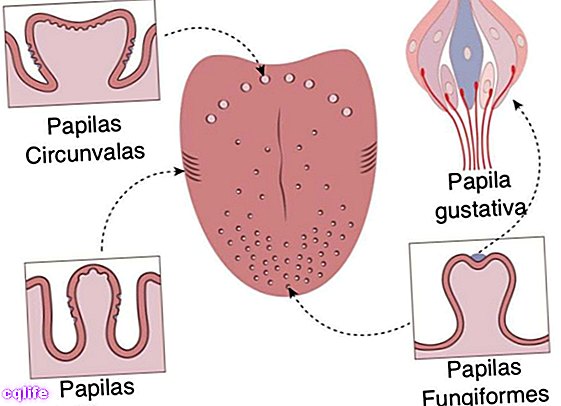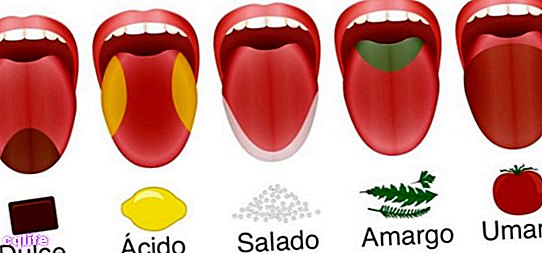- What is the taste sense?
- How does the sense of taste work?
- Taste buds
- Basic taste modalities
- Taking care of the sense of taste
We explain what the sense of taste is, how it works and what the taste buds are. Also, basic taste modalities.
Taste is one of the chemoreception senses.What is the taste sense?
Taste or sense of taste is one of the five senses through which the human being is related to the reality surrounding, that is, through which it obtains information her.
Among them, both taste and smell are considered chemoreception senses, that is, detection of molecules Y chemical compounds present in the matter, but unlike smell, which operates at a distance, taste obtains information through direct contact of the body's chemoreceptors with the consumed matter.
This is of paramount importance to the living beings, which is to alert them to the status of the organic material that are about to be consumed: the perception of flavors is linked to the presence of certain elements possibly toxic or irritants, or even with an advanced state of decomposition of the food. Conditions, both, in which it is not advisable to ingest it.
Additionally, the sense of taste can be a source of pleasures, since the ingestion of foods of good flavor unleashes pleasant sensations in the organism. Is that the reason behind the kitchen and the gastronomy, very highlights of all cultures.
It can help you: Sense of smell
How does the sense of taste work?
The perception of taste occurs in the mouth, logically, thanks to the interaction between food and the so-called taste corpuscles, most of which are found on the surface of the tongue. An adult human has around 10,000 of them, grouped into larger structures called taste buds.
When coming into contact with the food Dissolved in saliva, the taste buds release neurotransmitters that in turn trigger a nerve impulse, transmitted through specific nerve fibers (called taste pathways) from the taste buds within each papilla, to the nucleus of the solitary bundle in the medulla oblongata of the brain.
From there, the nerve information passes to the cortical projection area for taste, located in the postcentral circumvallation of the brain.
Each taste bud within the papillae is connected to 50 nerve fibers, each of which receives information from 5 taste buds. This occurs mostly on the tongue, but also on the soft palate, inner cheeks, pharynx, and epiglottis.
Taste buds

Located mostly on the tongue, giving it a rough appearance, the papillae are variously shaped structures, made up of groupings of taste buds, that is, of taste receptors capable of initiating nerve impulses. In total, the human mouth has about 7,900 nerve receptors.
Depending on its shape and its structure, taste buds are classified into:
- Mushroom-shaped papillae, which are mushroom-shaped and are located on the anterior dorsum and lateral edges of the tongue, and contain up to 5 taste buds in their upper region. They are in charge of perceiving sweet flavors.
- Circled papillae, also called goblet, are cup-shaped (calyx) and are located near the base of the tongue, arranged in a V-shape. Each one can have up to 100 taste buds inside, dedicated to capturing the bitter taste. while others fulfill functions of structural support.
- Leafy papillae, shaped like a tree leaf, located on the posterior region of the tongue and on the lingual mucosa. They can be perceived with the naked eye and although they tend to be of the least developed papillae, they are dedicated to the perception of salty flavors.
- Conical papillae, also called filiform, are filament-shaped and found on the lateral edges and tip of the tongue. Unlike the previous ones, they do not have taste functions (they lack taste buds) since their task is to perceive the texture and the temperature of food.
Basic taste modalities

The study of taste perception has generally identified five basic flavor types, called "taste patterns," into which any perceptible flavor can be broken down. Obviously, its recognition is associated with the action of different taste buds and therefore can vary with age, since in old age the flavors lose intensity, as a result of the weakening of the taste buds.
On the other hand, it must be considered that the flavors of food complement each other through smell, so that when eating both senses cooperate closely and activate similar nervous circuits in the brain. That is why in conditions of a cold or stuffy nose, the taste of food is perceived in a much more subdued way.
The five basic flavors are as follows:
- Acid or sour taste, like that of lemon. It is perceived in the posterior lateral region of the tongue, and is due to the presence of hydrogen cations in food: the higher the hydrogen concentration, the higher the acidity.
- Bitter taste, like quinine or chinchona. It is perceived with intensity in the posterior region of the tongue, and in general it is associated with natural reactions of rejection against the ingestion of toxic substances. But there is no common molecular profile for all substances bitter in taste.
- Sweet taste, like that of sugar. It is perceived preferentially on the tip of the tongue, and is naturally associated with biochemical energy sources, such as carbohydrates, and is therefore welcomed. In fact, most sweet-tasting substances have organic origins, such as sugars (saccharides), some alcohols, ketones and glycerol.
- Salty taste, like that of table salt. It is perceived in the lateral and anterior regions of the tongue, and is due to the presence of atoms sodium or potassium in food. Many organic compounds are also salty, and recognition and acceptance of salty foods occurs around four months of age.
- Umami flavor, like sodium glutamate. It is perceived by all receptors in the mouth and tongue, regardless of its position, and the first encounter we have with it comes from breast milk. This basic flavor was not "discovered" until the early 20th century, when it was formulated by the Japanese physiologist Kikunea Ikeda (1864-1936), and was scientifically accepted much later. Its name means "tasty" in Japanese.
However, the basic flavors are not fully documented, and it is estimated that there may be others, such as the fat taste or the metallic taste.
Taking care of the sense of taste
To take care of the sense of taste we must take care of our mouth and our tongue, understanding that there is a natural degenerative process that over the years will make us lose the intensity of the flavors. However, we must take into consideration the following dangers:
- Chronic tobacco and alcohol use impair taste buds.
- Continuous exposure of the tongue to spicy substances, too hot or too cold, deteriorates the health of the taste buds.
- Not having proper oral hygiene and dental health can impair the sense of taste.
- Certain medications, radiation therapy or hormonal disorders can cause taste disorders, such as loss or alteration of the perception of flavors.
